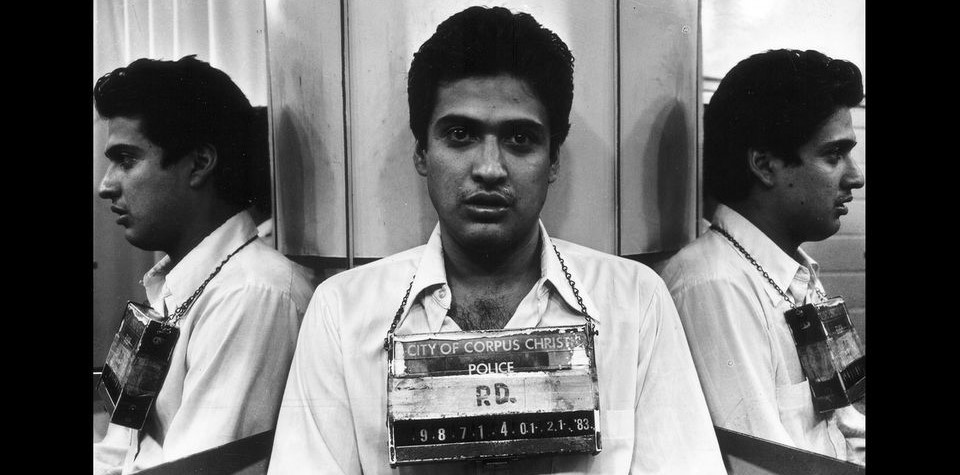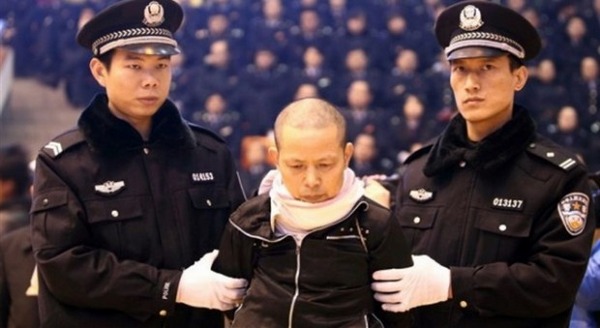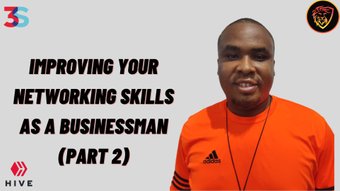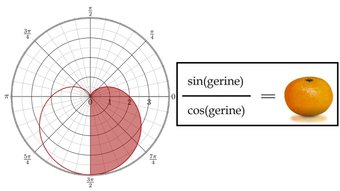Victims of Justice
About :


Introduction

My last post entitled, "Exoneration," led me to question the possibility of unjust executions. If people could be imprisoned unjustly, is it possible that the state executed someone unjustly? My findings say it has, unfortunately, occurred.
We believe what we see is the correct version of the world around us. The reality of the situation is that we are not alone in this world. The view of our reality may conflict with the views of others. The true stories we cover today are of prisoners on death row whose interpretations of events vastly differ from those that convicted them.
Here are some true stories of people executed whose cases are more complicated than their judgments.

Nathaniel Woods

Date
On March 5, 2020, Nathaniel Woods was executed by lethal injection at the Holman Correctional Facility in Alabama.
Conviction
Nathaniel Woods and Kerry Spencer were both convicted of capital murder in 2005. Kerry Spencer killed three officers during an altercation in a crack house. Nathaniel Woods was described as the mastermind of the altercation.
Backstory
Spencer was selling crack from an apartment. Woods was assisting him due to a need for money. According to Spencer, Woods was kind-hearted and no killer. On the night of the murders, Spencer confessed that he was alone responsible for killing the police officers. Spencer claims that he only fired upon them when they began assaulting Woods. Woods ran from the scene shortly after shots were exchanged between Spencer and the police.
Law enforcement, on the other hand, told a different story. According to law enforcement, Woods acted first as a lookout for the crackhouse. The surviving police officer of that ordeal stated Woods warned them against going into the crack house by stating, "If you come up here, we'll f**k you up". Police hold that Woods ran into the crack apartment after being shown a warrant. According to court documents, Woods jested "you can't catch me".
Misconduct
The claim that Woods didn't shoot anyone is not being contested. Kerry Spencer admits that he alone shot the police officers, and Woods wasn't involved. Unfortunately for Woods, he suffered from the effects of predatory prosecution and inept defense attorneys. The prosecution offered Woods a plea deal with him in prison between 20-25 years. The catch was that Woods needed to testify against Spencer. The defense attorney told him not to take the deal because there was no way he would be sentenced to death as an accomplice. Woods' attorney is apparently not aware of Alabama's accomplice laws.
Even the U.S. Supreme Court notes that his defense underrepresented Nathanial Woods. Also, they make no mention of any prosecutorial misconduct. SCOTUS issued a temporary delay for Woods' execution before deciding not to interfere. Woods' fate became sealed.
Opinions
It seems that everyone from celebrities, law enforcement, and even the son of Martin Luther King, tried to get Woods' sentencing reduced to life imprisonment. I haven't been able to get much from Woods himself. Unfortunately, the Governor of Alabama stated plainly that the justice system vetted Woods' case multiple times through one trial or another. There would be no reprieve from the death penalty.
Given Alabama's accomplice law, there is very little wiggle room for Woods. While it's easy to say he shouldn't have been there, I can't imagine the conditions of life that would push someone to work there just for a buck.

Cameron Willingham

Date
On February 17, 2004, Cameron Willingham was executed by lethal injection at the Texas State Penitentiary.
Conviction
Cameron Willingham was convicted for the capital murder of his three children.
Backstory
He awoke when his daughter called out his name. Smoke was in the air. The house was on fire. In a state of panic, Cameron Willingham frantically searched for his daughters but could not find them. He ran down his hallway and reached for the door. Upon exiting the house, the fire followed behind him and billowed out of the door. His kids were nowhere to be found outside.
"My babies are burning up" he cried out. Trying to find another way into the house, Cameron tried breaking some windows, but fire gushed out of the ones he broke. Firefighters coming on to the scene had to physically restrain him as he tried to reenter the house.
Following the fire, arson investigators walked through the remains of the home and began noticing the signs of arson. The signs were everywhere: v-shaped patterns along with various points, what appears to be liquid accelerants pooled along the ground, and evidence of lighter fluid soaks into the wood floor at the front of the house. Investigators determined the one cause of the fire: Cameron Willingham. It wasn't long before Cameron was arrested for the murder of his children.
Prosecutors had their sociopath. Their case was simple. All they had to do was present the truth to the jury. Prosecutors even had a jailhouse witness ready to testify to the court that Cameron admitted to starting the fire and killing his children to cover up signs of abuse. Between the arson investigation and the witness testimony, prosecutors had more than enough evidence to convict Cameron and sentence him to death.
At the behest of the mother's relatives, the prosecutor did something he never thought possible. To avoid the "anguish of a trial," the lead prosecutor offered the defense life imprisonment in exchange for a guilty plea. Cameron Willingham denied his involvement with the fire and turned down the plea deal.
Not too long after the trial, the jury returned a guilty verdict and a death sentence by lethal injection.
Misconduct
Prosecution
Prosecutors say Cameron's rejection of the plea deal is an admission of guilt. It couldn't have been possible that he was innocent of the fire and didn't want to spend life in prison. As with anyone else, a problem with prosecutors is the tunnel vision we experience when we have our "eyes on the prize." We'll never notice when our version of reality goes awry unless we're watching for it. Another problem with the prosecution, in this case, is their predatory approach for a conviction.
Remember the jailhouse witness? The lead prosecutor for the case offered him less time in jail for an admission that Cameron took credit for starting the fire. According to the witness, the prosecutor told him what to say for the best outcome in the case. Also, according to the witness was the fact that he never even talked to Cameron. The admission was a lie. The prosecutor spent more time helping out the witness years after the trial than he ever spent looking for the truth in Cameron's case.
Arson Investigation
The Texas arson investigators assigned to the case had years of experience, but little knowledge about the different stages of a fire. The burn patterns throughout the house indicated signs of arson due to an accelerant like gas or lighter fluid if you looked at nothing else.
The samples officials took from the scene only showed signs of an accelerant near the house's front door—the same area used by the family when grilling outdoors.
Instead, what investigators saw as arson was patterns of how the fire behaved itself as it ran its course. It produces the tell-tale signs of arson that investigators used to crucify Cameron. The root cause of the problem was that they didn't know how fires entirely worked. They would never have been able to put two and two together.
Opinions
The prosecutor wanted an easy win. He could have honestly believed that Cameron did it, but the prosecutor wanted to win more than anything. It's why he offered the plea deal to the jailhouse witness.
This one is a bit more tricky. The jailhouse witness knew he never heard a confession from Cameron. He testified anyway, knowing he was going to get a good deal from the prosecutor. I'm not sure I wouldn't have testified under the same circumstances. What would YOU have done? Please comment below.
I've seen people behaving like the arson investigator in my life. Someone has been around and thinks they know everything about a fire. The problem was that the arson investigator didn't know about how fires behaved. The different stages of fire would produce the same effects typical or actual arson. The difference was that you wouldn't detect the liquid accelerates commonly attributed to arson. He didn't know what he was doing. Unfortunately, once the initial trial concludes, it becomes challenging to get another retrial.
The evidence of prosecutorial misconduct and faulty arson investigation was enough to set Cameron free.

Arson Investigation
Could fire progress quickly enough that it appears someone used an accelerant like gas or lighter fluid? Yes. I don't profess to know anything about arson investigation. I do know, however, that I am not smart enough to know everything.
We should never pretend that we do.
The University of Pennsylvania Carey Law School video presents cases of wrongful arson convictions. We're so quick to pass judgment. We're are painfully slow to admit our wrongdoings.

Carlos Deluna

Date
Carlos Deluna was executed by lethal injection in December of 1989.
Conviction
Carlos Deluna was convicted and sentenced to death stabbing murder of Wanda Lopez in 1983.
Backstory
Carlos Deluna was not a saint. He had a prior history with law enforcement. On the day of the murder, he met with an acquaintance named Carlos Hernandez. They hadn't seen each other in some time. They decided to have a drink and catch up. Hernandez said he would get something from the store, and Deluna went ahead inside a bar. When Hernandez didn't appear, Carlos checked outside to find Hernandez struggling with another woman. The woman, Wanda Lopez, was murdered by stabbing. In his fright, Deluna ran from the scene and was hiding under a truck where police found and then arrested him for the murder of Wanda Lopez. She was the attendant at the gas station Hernandez approached.
Misconduct
Police never looked for anyone else matching "Hernandez's" description. According to the prosecution, Hernandez was a phantom Deluna constructed to escape prosecution. Witnesses identified Carlos as the person responsible. However, despite their identification of him in a lineup, the suspects' descriptions were strikingly different.
Police also performed little, if any, forensic examinations of the crime scene. All fingerprints take were unusable. Additionally, at one point, police directed officers to leave the area so that the owner could wash the area to remove the blood. The investigation wasn't even over yet, and police were getting all of the evidence destroyed.
One glaring piece of evidence not available to police was hair or blood samples on Deluna's body. Nothing. It's as if Deluna changed his clothes and washed himself of any blood spread throughout the crime scene. It could also mean that he never stabbed Ms. Lopez, but police and prosecution weren't interested in facts that stood in their way.
What little DNA evidence did exist disappeared by the time a Columbia Law Professor by the name of Liebman started investigating Deluna's case in 1983.
And what about the elusive phantom Carlos Hernandez? Was he an apparition present only in the mind of Deluna? Actually? No. He was a living, breathing person that regularly carried around a knife as his best friend. Hernandez was a self-confessed knife murderer that happily bragged about his namesake Carlos Deluna since he took the wrap for a murder Hernandez committed.
How could Hernandez get away from a murder conviction put upon someone else? It might have had something to do with his use as a police informant. I could only speculate on the worth of an informant when they work well with the prosecution. Hernandez bragged countless times about the women he's killed, but again, police didn't "know" he existed.
Opinions
I can't attempt to capture all of the errors that occurred in Carlos Deluna's investigation. From reading this tragedy, I feel that law enforcement ignored or denied the existence of Hernandez. Following Deluna's arrest, Hernandez continued with his exploits undeterred until becoming incarcerated for 10-years. Hernandez was convicted for the attempted murder Dina Ybanez with a knife. Despite this conviction, no alarms were raised, and Deluna was still executed.
Texas, I fear, has executed another person innocent of the crime they are accused of committing.

Teng Xingshan

Date
On January 28, 1989, Teng Xingshan was executed by Chinese authorities by shooting him in the back of the head.
Conviction
Teng Xingshan was convicted and sentenced to death for the murder and dismemberment of Shi Xiaorong.
Backstory
Teng Xingshan led a happy life with his family. Working as a butcher, he owned a small shot where his wife took care of the housework. On April 27, 1987, Teng's life would take a turn for the horribly hellish life of an accused.
Police discovered a dismembered female body along the Jinjiang River. Chinese Public Security wanted this case solved quickly. They noted the "professionalism" of the dismemberment and concluded that the murderer had to be specialized in such a task. Who better than a butcher could do something so precise and horrible? It just so happened that Hunan province had a butcher in their midsts.
Two years later, despite evidence to the contrary, Teng Xingshan was executed for murder with a bullet to the back of the head.
Misconduct
Clearly, gathering information on this case is difficult as it originates from China. I can't read their language, and while Google translates it well enough, I don't know how the precision of the translation.
The above being written, this case appears similar to the others. Police frantic to close this case seek out the barest of all clues that hint towards closure. Police make a questionable connection in the identity of the victim in Shi Xiaorong who was missing. Following interviews with Shi's family, they connected Shi's identity with the victim.
Shi Xiaorong worked at the Plaza Hotel. They connected Shi with Teng because police believed Teng went to the hotel to solicit prostitutes. These tenuous connections made the case against Teng.
Police were also uncooperative with the defense. The defense presented evidence against the conviction, but police wouldn't budge. They had their killer. There was no need to look around anywhere else. Besides, Teng confessed. It's not like they beat the confession out of him.
Opinions
I hope never to know what it is like to profess your innocence while society condemns you. Teng Xingshan, like the others of this article, knows the feeling all too well. It must be a hellish existence to know with certainty that you're doomed because of a lie.
I believe Teng is innocent. His innocence of the murder is clear as Teng's "victim" returned to town only a couple of years later. Unfortunately, the circumstances did not allow for his freedom but did allow his exoneration. I hope his family is well and heals from this horrid situation.

George Stinney Jr.

Date
On June 16, 1944, George Stinney Jr. was executed by electrocution in South Carolina.
Conviction
George Stinney Jr. was convicted and sentenced to death for the brutal beating and murder of two young white girls.
The year was 1944. The town of Alcolu, South Carolina were separated by railroad tracks serving to divide the town between black and white people.
Backstory
George Stinney and his sister were busy watching their cow when two girls, named Betty June and Mary Emma, happened upon them asking for the location of flowers. George's sister told the flowers they were looking for weren't there. The girls went on their way. It was, at least for the time, an amicable exchange for the times.
Unfortunately for the town, the girls never returned home. A search party later assembled found the bodies of Betty and Mary. They were beaten savagely and died from blows inflicted on their heads.
Officers arrested George and his brother for the murders but later released the brother. According to law enforcement of the time, George beat and killed the younger girl so he could rape and kill the older one. Apparently, George not only confessed this to the police, but he also showed them the location of the murder weapon.
Misconduct
George's siblings reported that George and his sister returned later that evening with no appearance of blood on their clothes. They were clean and displayed no signs of agitation.
The Sheriff involved in the case only provided a word-of-mouth confession. George didn't write it.
The defense attorney provided no objections in light of prosecutorial misconduct. The defense also prepared no appeals in light of zero physical evidence connecting George to the murders.
The jury never deliberated the case. When the jury was dismissed from the court for deliberation, it only lasted 10-minutes. If they spent any amount of time actually thinking about the trial and had no influence on their judgment, George would have been acquitted.
It took 70-years to exonerate George Stinney Jr.
The victims' families were surprisingly against the exoneration trial of George Stinney. Their viewpoint was that George confessed and we should leave things where they were in the past.
Law enforcement, unsurprisingly, held that George was convicted based upon the laws of the time. They complained that carrying on with the trial may lead to other cases coming up seeking relief. I truly hope that does happen.
Opinions
Predators seek easy prey. In the case of George Stinney, during the middle 1900s, he was an easy victim. Did anyone even try to find the right killer? The sheriff at the time said George showed him where the murder weapon was and that he was sorry for killing the girls. Was that an honest confession?
Given the testimony of his family, misconduct during the trial, and George's physique, he couldn't have committed the murder. Even IF he killed those girls, the conduct during the trial between defense and prosecution would have resulted in a mistrial or something like it.
Yet, law enforcement didn't want a retrial. They found their "murderer," and that was the end. The real killer, however, will never see justice done.

George Stinney Jr. Video

In Closing

Image by Gerd Altmann from Pixabay
I don't know why there is injustice in the world. Perhaps it is because justice is blind. Justice can't see the world around it, the people living inside it, or the strife that comes from living in a hard world.
Thank you for reading and following on throughout my Hive journey.
Don't forget to upvote, follow @scholaris, and comment below! Thank you for reading.

Tags :
Their limit for today is $0!
More Videos
@tribesteemup: 1.2596
@abh12345: 0.3542
@steemychicken1: 0.3239
@zuerich: 0.2624
@mmmmkkkk311: 0.1600
@deepdives: 0.1536
@informationwar: 0.1260
@fw206: 0.0749
@tribesteemup: 2.4500
@abh12345: 0.6888
@steemychicken1: 0.6299
@zuerich: 0.5103
@mmmmkkkk311: 0.3112
@deepdives: 0.2988
@informationwar: 0.2451
@fw206: 0.1457





























Comments:
Reply:
To comment on this video please connect a HIVE account to your profile: Connect HIVE Account